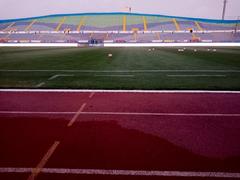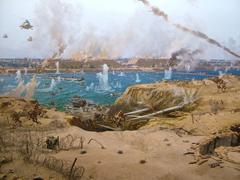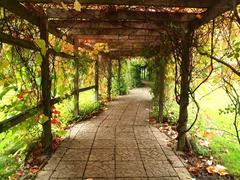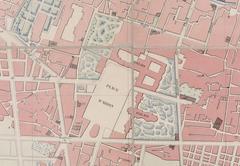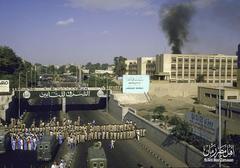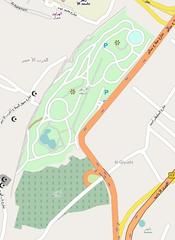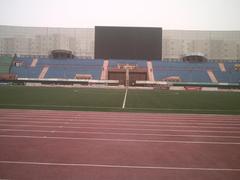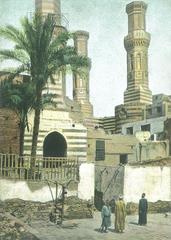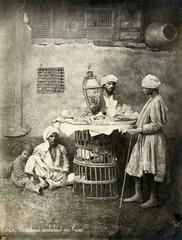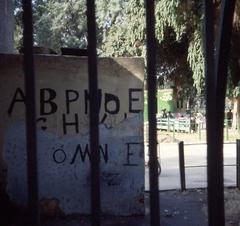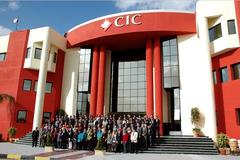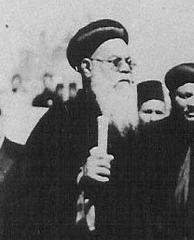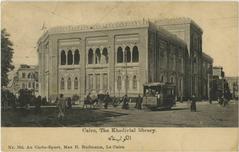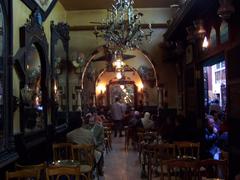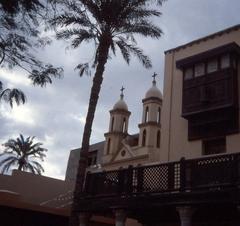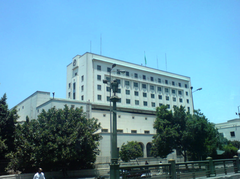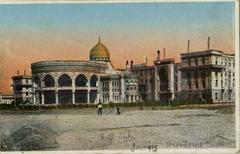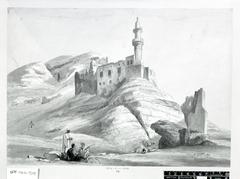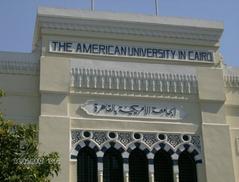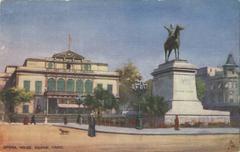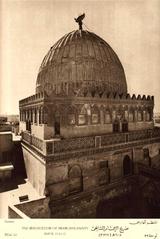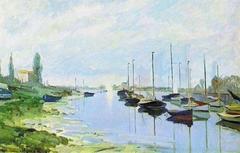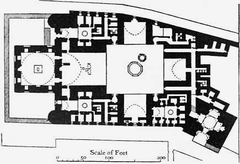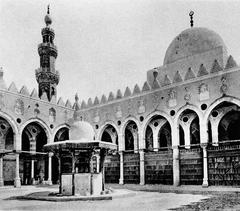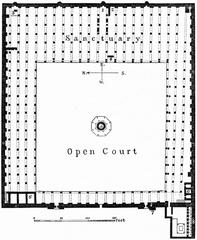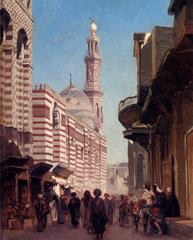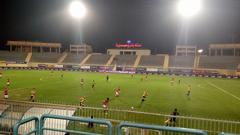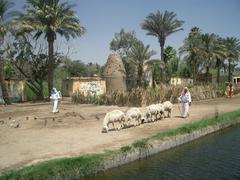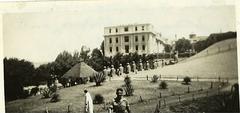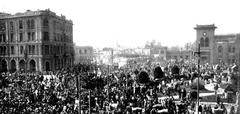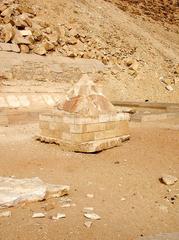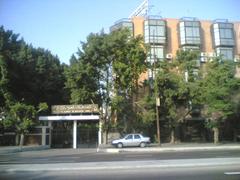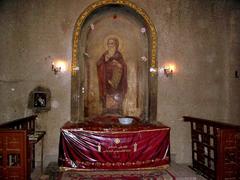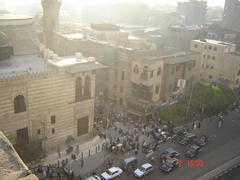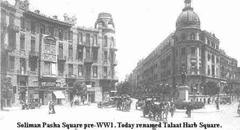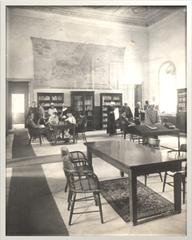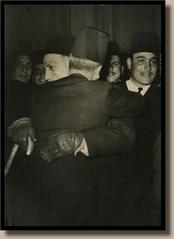Manial Palace and Museum: Visiting Hours, Tickets, and Historical Significance in Cairo
Date: 14/06/2025
Introduction
Nestled on the tranquil Rhoda Island along the Nile River in Cairo, the Manial Palace and Museum stands as a striking emblem of Egypt’s royal heritage and architectural brilliance. Commissioned by Prince Mohamed Ali Tewfik between 1899 and 1929, the palace complex is a masterful fusion of Islamic architectural styles—Ottoman, Persian, Moorish, Andalusian, Rococo, and European—reflecting the prince’s cosmopolitan vision and passion for the arts. Spanning over 61,000 square meters, the estate encompasses richly decorated reception halls, private chambers, a mosque, and enchanting Persian and English gardens.
Today, the Manial Palace serves as a museum, preserving a remarkable collection of royal artifacts, manuscripts, decorative arts, and textiles that collectively narrate the story of Egypt’s aristocratic past. This guide provides detailed information on visiting hours, tickets, accessibility, guided tours, and nearby attractions, ensuring travelers can plan a memorable visit to one of Cairo’s most treasured sites. For official visitor details, refer to the Egyptian Tourism Authority, Egypt Today, and Egyptian Ministry of Tourism and Antiquities.
Table of Contents
- Origins and Construction
- Architectural and Artistic Significance
- The Royal Legacy of Prince Mohamed Ali Tewfik
- Historical Events and Notable Visitors
- Visiting Information
- Permanent Collections and Highlights
- Temporary Exhibitions and Cultural Programs
- Visitor Facilities and Amenities
- Travel Tips and Contact Information
- Frequently Asked Questions (FAQ)
- Conclusion and Resources
Origins and Construction
The construction of Manial Palace began in 1899 and was completed in 1929, taking three decades to become the prince’s lavish residence and a showcase of Islamic art and architecture (Egyptian Tourism Authority). The palace was designed to blend multiple cultural influences and serve as a private haven as well as a space for entertaining dignitaries and intellectuals.
Architectural and Artistic Significance
Manial Palace is celebrated for its eclectic Islamic design, detailed woodwork, stained glass, ornate tilework, and gilded ceilings crafted by master artisans. The interiors are adorned with rare carpets, antique furniture, and an impressive array of Islamic manuscripts and artifacts personally collected by Prince Mohamed Ali Tewfik (Lonely Planet).
Key Features:
- Reception Palace (Salamlek): Grand halls with Ottoman and Moorish motifs, used for official receptions.
- Residential Palace (Haramlek): Private quarters with Persian-inspired décor and intimate courtyards.
- Throne Hall: Majestic ceremonial space with a gilded ceiling and marble floors.
- Mosque: Decorated with intricate Islamic art, reflecting the prince’s devotion.
- Gardens: Designed in Persian and English landscape styles, featuring rare plants and tranquil spaces (Atlas Obscura).
The palace’s design is a harmonious synthesis of Ottoman arches, Moorish tilework, Persian floral motifs, and European Rococo details, all unified under the vision of Prince Mohamed Ali and the influence of Italian architect Antonio Lasciac (egypttoursportal.com; flyingcarpettours.com).
The Royal Legacy of Prince Mohamed Ali Tewfik
Prince Mohamed Ali Tewfik (1875–1955), a member of the Muhammad Ali Dynasty and uncle to King Farouk, was a cultural patron and twice heir presumptive to the Egyptian throne. His vision for the palace combined Egypt’s Islamic heritage with international influences, making it a cultural hub for artists, diplomats, and intellectuals (Egypt Today). Following the 1952 revolution, the palace was nationalized and transformed into a museum, ensuring the preservation of its royal legacy (Ahram Online).
Historical Events and Notable Visitors
Throughout its history, Manial Palace hosted royal receptions, cultural salons, and diplomatic events, welcoming European royalty and Ottoman dignitaries alike. It also served as a discreet meeting place for political figures before the 1952 revolution (Daily News Egypt).
Visiting Information
Visiting Hours
- Standard Hours: Typically open from 9:00 AM to 5:00 PM, Tuesday through Sunday
- Closed: Mondays and public holidays
- Last Entry: Usually 30–60 minutes before closing—arrive early to enjoy the full experience
- Always verify current hours on the official website.
Tickets and Admission
- General Admission: 60–100 EGP for foreign adults
- Egyptian Nationals: 20–40 EGP
- Students and Seniors: Reduced rates with valid ID
- Children: Free entry for those under 6 (policy may vary)
- Photography Fee: Typically 50 EGP (confirm on site)
- Tickets can be purchased at the entrance or online through authorized platforms
Accessibility
- Ramped entrance available; however, uneven surfaces and stairs limit full wheelchair accessibility (sharm-club.com).
- Contact the museum in advance for special arrangements.
Guided Tours
- Guided tours in Arabic and English are available.
- Audio guides can be rented at the entrance.
- Group tours and educational workshops may require advance booking.
Best Times to Visit
- October to April offers the most pleasant weather.
- Weekday mornings are least crowded.
- Allocate 2–3 hours to fully explore the complex.
Photography and Special Events
- Photography is permitted in most areas for a fee.
- Flash and tripods may be restricted in certain halls.
- The palace hosts concerts, art exhibitions, and private events—check the official site for the event calendar.
Nearby Attractions
- Museum of Islamic Art
- Cairo Citadel
- Khan el-Khalili Bazaar
- National Museum of Egyptian Civilization
- Egyptian Museum
Permanent Collections and Highlights
Royal Apartments and Furnishings
Explore the preserved private chambers, reception halls, and harem quarters featuring original furnishings, textiles, and decorative arts (sharm-club.com). Notable rooms include the Mirror Lobby, Blue Saloon, Arabesque Saloon, and Fireplace Room.
Decorative Arts and Antiques
Admire an eclectic collection of ceramics, silver, glassware, and Ottoman-style furniture. The Golden Hall and Throne Hall feature gold inscriptions, inlaid tables, and rare carpets (egyptinsights.com).
Manuscripts, Textiles, and Personal Effects
Highlights include illuminated Qur’ans, calligraphic manuscripts, ceremonial garments, and personal effects donated by the royal family (leriadcairo.com).
The Private and Hunting Museums
The Private Museum showcases jewelry, gems, and rare artifacts, while the Hunting Museum presents taxidermied animals and hunting trophies collected by the royal family (egymonuments.gov.eg).
Botanical Gardens
The gardens are home to rare plants and trees from around the world, offering peaceful walkways and scenic views (egyptinsights.com).
Temporary Exhibitions and Cultural Programs
- Events and exhibitions are regularly hosted in the Private Museum and Golden Hall, featuring artworks, manuscripts, and cultural collaborations (egymonuments.gov.eg).
- Lectures, workshops, and educational activities for school groups and families are available.
- Cultural performances, art fairs, and seasonal festivals are often held in the gardens.
Visitor Facilities and Amenities
- Restrooms: Located throughout the grounds
- Seating: Benches and shaded areas in gardens
- Gift Shop: Souvenirs and books available near the entrance
- Accessibility: Paved paths and ramps in some sections
- Refreshments: No onsite café, but nearby dining in the Manial district
- Security: Bag checks at entry; visitor cooperation required
Travel Tips and Contact Information
- Use sun protection during summer.
- Bring water and wear comfortable shoes.
- Supervise children near fountains and artifacts.
- For accessibility needs, contact the palace prior to your visit.
Location: Sharia Al-Saray, Manial, Cairo Governorate
Official Website: Manial Palace - Egypt Tourism Authority
Frequently Asked Questions (FAQ)
What are the Manial Palace Museum visiting hours?
Open Tuesday–Sunday, 9:00 AM–5:00 PM; closed Mondays and public holidays.
How much are tickets?
General admission 60–100 EGP; discounts for Egyptians, students, and children.
Is the museum wheelchair accessible?
Some areas are accessible, but stairs and uneven floors limit full access.
Are guided tours available?
Yes, in Arabic and English; audio guides are also offered.
Can I take photographs?
Yes, with a fee. Restrictions apply to some exhibition halls.
What are nearby attractions?
Museum of Islamic Art, Cairo Citadel, Khan el-Khalili, and more.
Conclusion
The Manial Palace and Museum is a must-visit for anyone seeking to discover Egypt’s royal past, artistic treasures, and garden serenity. With comprehensive collections, architectural marvels, and vibrant cultural programs, the palace offers an immersive experience for history lovers and casual visitors alike. Plan your visit using the latest information from official resources, and consider guided tours for deeper insight.
For up-to-date details, events, and guided tour options, download the Audiala app and follow Manial Palace on social media.
References
- Egyptian Tourism Authority
- Egypt Tours Portal
- Sharm Club
- Egypt Travel Authority
- Egypt Today
- Egypt Independent
- Egyptian Ministry of Tourism and Antiquities
- Ahram Online
- Atlas Obscura
- Lonely Planet
- Daily News Egypt
- leriadcairo.com
- egyptinsights.com
- flyingcarpettours.com
- arabmls.org
